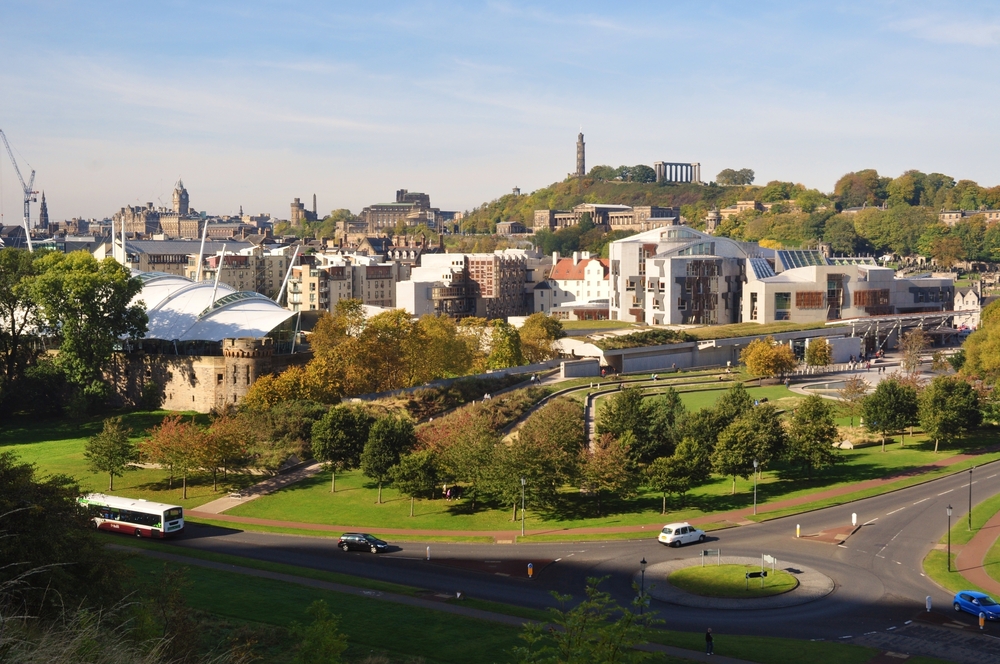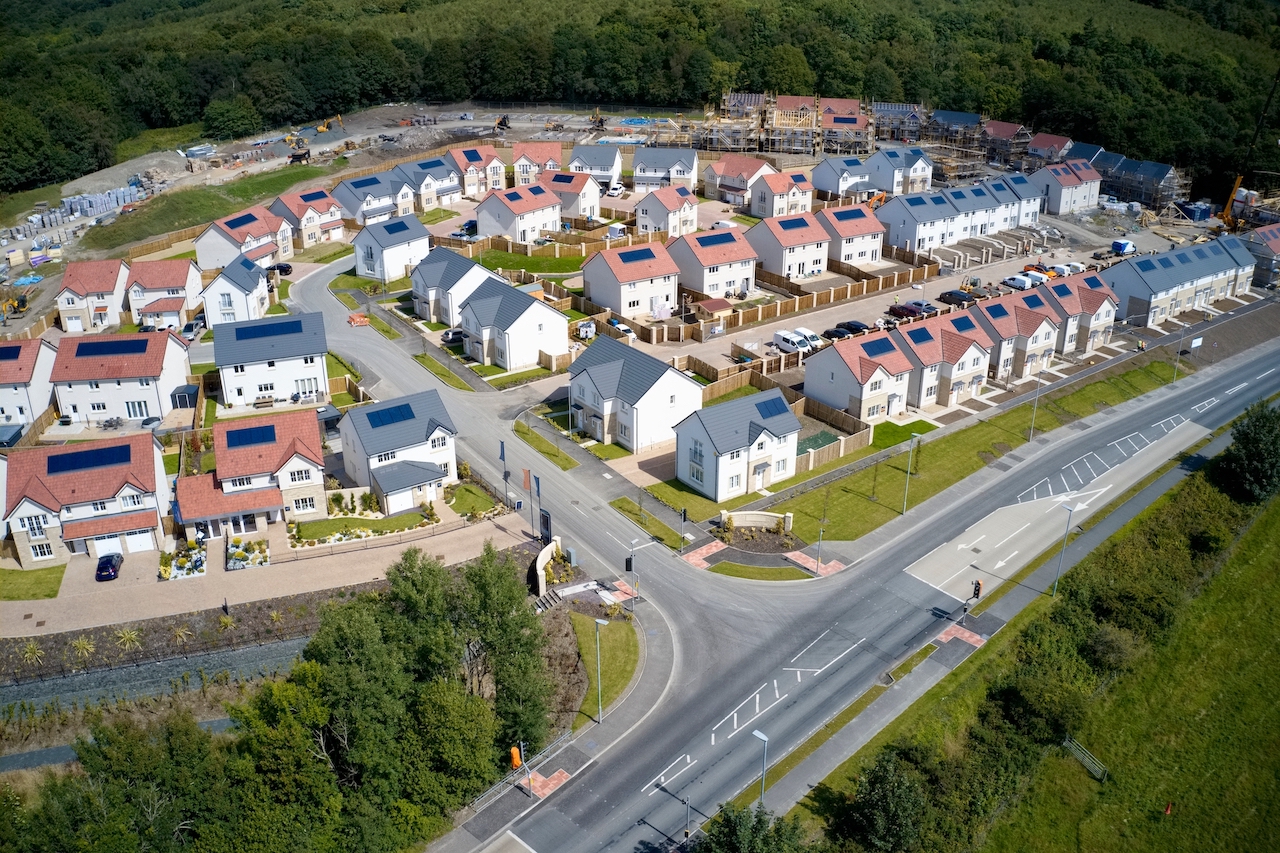Blog
- Details
- Hits: 222
Autumn Budget 2025 — What It Means for the Scottish Property Market
The 2025 Autumn Budget unveiled by the UK Government has stirred up a wave of headlines, especially around tax changes for landlords and high value homeowners. For Scotland, the real picture is more intricate. As many property taxes and income tax powers are devolved, what happens south of the border does not automatically apply up here. This means Scottish homeowners, buyers and landlords face a different reality. For many in Scotland, the bigger shifts may already be underway, through measures taken by Holyrood, rather than in Westminster. Our letting and residential teams have reviewed the budget and lay out what’s changing, what stays the same, and what that means for Scottish property markets.
Which Budget changes apply (or don’t) to Scotland
Income tax changes on rental property (only if Holyrood mirrors them)
- The UK Autumn Budget raises taxes on property income: from April 2027, rental income will be taxed an extra 2%meaning higher, additional (and basic) rate taxpayers’ property income will be taxed more heavily. Source Which?+2Inside Housing+2
- However: income tax is devolved in Scotland. Source Scottish Association of Landlords+1
- Scottish landlords therefore will not be affected unless the Scottish Government decides to match (mirror) that increase when it sets its own tax bands. The next Scottish Budget, due in January 2026, will likely clarify this. Source Scottish Association of Landlords+1
- In short: at present, no automatic rise for Scottish landlords but investors should watch Holyrood’s next moves.
Stamp-duty equivalent (purchase tax): Scotland uses Land and Buildings Transaction Tax (LBTT), not UK Stamp Duty
- Since 2015, property purchases in Scotland have been taxed under LBTT, not Stamp Duty.
- That means UK-wide reforms to Stamp Duty do not apply in Scotland.
- LBTT rates/bands remain a matter for the Scottish Government and Scottish Parliament any changes must come via Holyrood.
So, for buyers or second-home investors in Scotland, the Budget’s purchase tax changes at Westminster do not automatically bite.
Additional Dwelling Supplement (ADS), already higher in Scotland
- Separately, the Scottish Government recently increased the surcharge on second/extra homes (the Additional Dwelling Supplement, ADS) from 6% to 8% (effective 5 December 2024) for purchases of second homes, buy-to-lets, holiday homes, etc. Source Institute for Fiscal Studies+2Scottish Association of Landlords+2
- The rise means landlords or second-home buyers pay considerably more than before on top of standard LBTT. Source Institute for Fiscal Studies+1
- According to industry data, income from LBTT (including ADS) has recently hit records: in 2024, Scottish property taxes raised over £674 million, this is a significant jump from previous years. Source Scottish Financial News+1
- In the 12 months to August 2025, revenues rose again: total LBTT receipts topped £717.2 million, with ADS related revenue accounting for around 31.9% of that total. Source Intermediary Mortgage News
This means investors already face a relatively heavy upfront cost for second homes or rental properties in Scotland a factor that has and will continue to influence buy-to-let appetite going forward.
“Mansion tax” / High-value home surcharge applies UK-wide, but Scotland’s separate tax regime complicates things
- The UK Budget introduces a new annual surcharge on very high value homes (valued over £2 million), to take effect from April 2028. Source Inside Housing+2Which?+2
- Due to Scotland’s property taxation (council tax / LBTT / ADS) being devolved, the presence and implementation of any equivalent surcharge in Scotland would require separate action by Scottish authorities. Source Scottish Government+1
- At present, there is no automatic expectation that Scotland will introduce an equivalent levy on high-value homes. However, activity at the upper end of the Scottish market may still be influenced by sentiment and headlines coming from the wider UK.
What is already changing in Scotland and likely to matter more
Even before the 2025 UK Budget, Scotland has been evolving its own property tax regime with implications landlords, buyers and investors need to heed.
- The increase to the ADS (from 6% to 8%) is already real. This makes second home purchases, holiday lets, buy-to-lets and similar investments more costly. Source Scottish Association of Landlords+2Institute for Fiscal Studies+2
- The proportion of transactions subject to higher LBTT/ADS is substantial. In 2023–24, around 64% of property sales exceeded the £145,000 threshold. Source Institute for Fiscal Studies+1
- As of 2024, Scottish buyers contributed a record high in LBTT receipts; and 2025’s figures suggest continued strong revenue indicating that buying activity remains relatively robust despite higher transaction costs. Source Scottish Financial News+2Intermediary Mortgage News+2
- For many buy-to-let investors and second-home buyers, the increased upfront cost may disincentivise purchases which could over time place upward pressure on rents if supply tightens.
What this means for different types of Scottish property-market participants
First-time buyers / domestic owner-occupiers
If you are buying your main home, the 2025 UK Budget brings no new tax burden directly (at least as far as LBTT and ADS are concerned) because purchase taxes are set by the Scottish Government, not Westminster.
That said, anticipate higher competition from existing homeowners, especially investors or second home owners who may treat their high upfront costs and tax exposure as a reason to exit or shift strategy. That could tighten supply and keep upward pressure on prices in some segments.
Buy-to-let investors & landlords
- The increased ADS already makes acquiring additional properties more expensive.
- The UK Budget’s proposed 2% rise in rental-income tax will not apply to Scottish landlords unless the Scottish Government decides to mimic it but that’s still a significant risk, because it would reduce net yields.
- Combined with other costs (mortgages, maintenance, regulation), some smaller or more marginal landlords may reconsider holding property long-term under a buy-to-let model.
Second-home / holiday-let buyers
- The ADS now at 8% is a clear disincentive — meaning the appetite for purchasing second homes or holiday lets may soften, especially if the purchase is financed.
- If UK-wide “mansion tax” sentiment filters into Scottish markets — even if not automatically implemented — there could be hesitancy among high-net-worth buyers of expensive homes.
Why Scotland’s own tax regime and not the UK Budget is the bigger factor now
Due to the devolved nature of property taxation in Scotland, the immediate “tax environment” is shaped more by decisions made by the Scottish Government (Holyrood) than by the UK Treasury. In other words: for most Scottish landlords, buyers and investors, the 2024–25 changes to LBTT and ADS are already more material than yesterday’s Budget.
It’s worth noting that the ADS increase was justified by the Scottish Government in part as a means to protect opportunities for first-time buyers and curb excessive second home purchases though critics argue it penalises the private rental sector and discourages investment. Source ICAEW+2Institute for Fiscal Studies+2
What to watch and what to plan for (for anyone active in Scottish property)
- Watch the 2026 Scottish Budget (due January) that will show whether the Scottish Government will mirror Westminster’s proposed 2% rise in rental-income tax. That decision could reshape landlord yields and influence investor behaviour significantly.
- Expect transaction costs to stay high for investors & second-home buyers with ADS at 8%, the upfront tax burden is already a major factor, likely to suppress some buy-to-let or second home demand.
- Potential shift in landlord market composition smaller landlords or those with marginal yields may exit, creating room for larger, institutional or long-term investors. That could lead to greater consolidation in the rental market.
- First-time buyer / owner-occupier demand remains central as investors face tighter returns, first-time buyers might find less competition from buy-to-let buyers, supporting owner-occupation demand (though affordability remains a challenge).
- Regional variation matters more than ever the impact will differ across Scotland (Edinburgh vs Highlands vs rural areas), depending on base values, supply, investor interest, and demand for second homes or holiday lets.
In the long view, the 2025 Autumn Budget may catch the headlines but for much of Scotland’s property market, the bigger levers are already controlled locally. With a higher Additional Dwelling Supplement, and LBTT firmly under the Scottish Government’s authority, the real costs and incentives for investors, buyers and landlords are shaped more by decisions made in Edinburgh than by policies in London.
For landlords and investors: now is the time for careful scenario planning run yield analyses, review portfolios, and prepare for possible further tax changes after the next Scottish Budget. For first-time buyers and owner-occupiers: there may be changing dynamics in demand and supply that create opportunities, but affordability pressures persist.
Above all: if you are active in Scottish property whether as landlord, investor, buyer or adviser the coming months are likely to be decisive.
It’s a time to watch Holyrood closely.
- Details
- Hits: 119
CELEBRATING LOCAL TALENT: NOMINATIONS CLOSE FOR THE RISING STAR AWARD
As the chill of autumn settles over Scotland and Edinburgh’s skyline begins to sparkle with winter light, there’s a buzz of excitement growing at the heart of the city. Today marks an important milestone: the closing of nominations for the Rising Star Award at the Edinburgh City Chambers Business Awards and at Logan Property, we couldn’t be prouder to be this year’s official sponsor.
The Rising Star Award shines a spotlight on exceptional emerging talent across Edinburgh’s vibrant business community. These are the innovators, creators, and future leaders whose energy and ambition help drive our city forward. From entrepreneurial self-starters to young professionals making waves in their industries, the nominees this year promise to be nothing short of inspiring.
A Moment to Celebrate
Sponsoring this award reflects Logan Property’s commitment to recognising and supporting the next generation. In property, growth is everything, growth of communities, of opportunity, and of the people who shape the future. Celebrating rising talent is a natural extension of what we believe in.
We’re also thrilled that our very own John Logan, Managing Director and CXO of Logan Property, will be part of the judging panel this year bringing his passion for innovation, community-building, and future-focused leadership to the selection process. John is very much looking forward to reviewing this year’s exceptional talent pool.
To all those who put themselves forward or were nominated: we wish you the very best of luck.
Don’t Miss Out — Secure Your Tickets
While nominations may now be closed, the excitement is only just beginning. The awards ceremony will bring together some of the brightest minds and most influential voices in Edinburgh’s business landscape. It’s always a night filled with inspiration, celebration, and connection the kind of atmosphere where ideas spark and partnerships form.
If you haven’t already, now is the perfect time to book your tickets for the Edinburgh City Chambers Business Awards. Whether you're supporting a nominee, networking with industry peers, or simply looking to enjoy an uplifting evening, it’s an event not to be missed.
👉 Get your tickets now and be part of the celebration.
We can’t wait to see you there.
- Details
- Hits: 179
Growing Stronger Together: Welcoming William Riddell to Logan Property
We’re thrilled to share another exciting addition to the Logan Property team — William Riddell, who joins us as Operations Manager!
William brings a wealth of experience in property operations, leadership, and continuous improvement. He’s led major system rollouts, streamlined processes, and inspired teams to work smarter and deliver exceptional service — all with a strong focus on collaboration and structure.
Before joining us, William played a key role at Umega in Edinburgh, leading business support and operational teams through a period of transformation and growth. His passion for efficiency and his people-first approach fit perfectly with our values at Logan Property.
“William’s focus on process and his ability to bring structure and consistency to operational delivery make him a fantastic addition to our leadership team,” says John Logan, Managing Director.
“We’re confident his experience and energy will help drive continued improvements across the business as we expand and evolve.”
William’s arrival follows the recent appointment of Natalie Simpson as Business Development Manager, marking another step in our journey of strategic growth. Together, they bring fresh energy, ideas, and expertise that will strengthen our leadership and help us continue to deliver the best for our clients.
When he’s not driving operational excellence, you’ll likely find William outdoors — hiking Scotland’s trails, tackling Munros, or reliving his West Highland Way adventures.
We’re incredibly proud of how our team continues to grow — not just in numbers, but in strength, capability, and shared purpose.
Here’s to the next exciting chapter for Logan Property!
- Details
- Hits: 191
New-Build Homes in Scotland: Promise, Pressure, and What’s Next for 2025
Scotland’s property market has proven remarkably resilient in recent years but one corner of it is now under the spotlight: new-build homes. With affordability, supply, and energy efficiency all part of the conversation, 2025 has shaped up to be an important year for anyone thinking about buying, selling, or investing in this part of the market.
Let’s unpack what’s happened and happening across Scotland and especially around the Central Belt to see where things might be heading next.
The State of Play: New-Builds Slowing Down
While overall house prices across Scotland rose around 5–6% over the past year, the new-build sector has shown signs of slowing. According to Registers of Scotland, new-build transactions made up just 9% of all sales in 2024–25, and the total market value for new-builds actually fell by about 4%, despite modest increases in average prices.
In other words: homes are still selling, but fewer are being built and sold.
There are a few reasons for this. Rising construction costs, planning delays, and tighter funding have all made it harder for developers to keep up supply. At the same time, demand hasn’t disappeared particularly for energy-efficient homes that help keep running costs down. The result? More competition for fewer properties, and continued upward pressure on prices for certain types of new-builds.
Why Buyers Still Love New-Builds
Despite the dip in supply, new-builds remain high on buyers’ wish lists. Here’s why:
- Energy Efficiency: With energy bills still biting, EPC ratings have become more than a box-ticking exercise. New-builds typically outperform older homes, offering better insulation and lower running costs.
- Low Maintenance: Move-in ready homes are appealing to busy professionals and families who don’t want renovation projects.
- Modern Layouts: Open-plan living, home-office space, and generous storage continue to match what buyers are looking for post-pandemic.
- Incentives: Many developers continue to offer schemes such as part-exchange or help with deposit contributions giving new-builds a financial edge.
The Central Belt: A Tale of Two Cities
Zooming in on Scotland’s Central Belt particularly Edinburgh and Glasgow paints a mixed picture.
Edinburgh: Premium Pricing Meets Planning Pressure
The capital continues to command premium prices, with the average home now well over £330,000. For new-builds, the figure can be significantly higher, particularly in sought-after developments near the city centre or along commuter routes like Midlothian and East Lothian.
But supply is constrained. Planning regulations and limited land availability have slowed down new projects, keeping pressure on both prices and demand. As a result, buyers are increasingly looking outward to areas like Livingston, Dunfermline, and East Calder, where new developments are offering better value and modern specifications.
Glasgow: Value, Volume, and Regeneration
Glasgow’s market, by contrast, is showing more volume and variety. Average prices remain lower than Edinburgh, at around £180,000–£200,000, which gives developers more breathing room to deliver affordable schemes. The southside, Clyde Gateway, and East End regeneration zones are all seeing new-build activity tied to long-term city improvement plans.
First-time buyers and investors continue to find opportunities here, especially in developments near major transport links and universities. However, even in Glasgow, the pace of completions has slowed — mirroring the national trend.
Beyond the Cities: Suburbs and Small Towns on the Rise
The move towards hybrid working has changed what “location” means for many Scots. Buyers who only commute part-time are more willing to look beyond the city to commuter towns with easy access to amenities, countryside, or even a golf course or coastal path.
Areas like Stirling, Falkirk, East Lothian, and Fife are benefiting from this trend, offering newer housing stock at more accessible prices. Many of these homes also meet higher energy standards, which makes them especially attractive for families thinking long-term.
Challenges for Developers and Policymakers
While the demand is there, the supply side faces real challenges:
- Rising Build Costs: Labour and materials remain expensive, putting pressure on margins.
- Planning & Regulation: Local planning processes can take years, delaying delivery and adding uncertainty for developers.
- Environmental Standards: New energy efficiency requirements are positive overall, but they do add upfront costs that can make some projects less viable.
Some in the industry are calling for clearer planning frameworks and government incentives to support sustainable development especially smaller or mid-sized builders who don’t have the capital buffers of major housebuilders.
What This Means for Buyers and Sellers
For buyers, the message is simple: if you’re eyeing a new-build, act early and compare carefully. The best plots and incentive packages tend to go quickly, especially in commuter-friendly areas. And remember that resale values for modern, energy-efficient homes are likely to stay strong as sustainability becomes a bigger part of the housing conversation.
For sellers, particularly those with relatively new homes built within the last 5–10 years, this moment presents an opportunity. Your property could appeal to buyers priced out of brand-new builds but still seeking that low-maintenance lifestyle.
For investors and landlords, new-builds remain attractive long-term assets though current rental policy changes and cost pressures mean you’ll want to model yields conservatively and keep an eye on legislative shifts.
Looking Ahead: Opportunity Amid the Slowdown
While the slowdown in new-build activity might sound like bad news, it also creates opportunity. With fewer homes being delivered, well-located and energy-efficient properties are likely to hold their value even in a cooling wider market.
In short, the next year for Scotland’s property scene may not be about boom and bust, but about balance: matching the homes we build to the lifestyles buyers are actually living. And if the market can get that right particularly across the Central Belt the long-term outlook remains bright.
If you’re considering a move in 2025 whether to buy, sell, or invest understanding where the new-build market is heading can help you make a confident, informed decision. Scotland’s story may be changing, but opportunity still lies at the heart of it.
- Details
- Hits: 184
Why using a good letting agent isn't just smart - It's Essential!
In recent days, media attention turned to the case of Rachel Reeves, the UK Chancellor, who admitted to renting out her property without obtaining the required licence. While the incident may feel distant from the Scottish lettings market, it highlights a universal truth: letting a property isn’t simply about handing over the keys. Compliance, expertise and value all hinge on working with a qualified and proactive lettings agent.
The Reality of Lettings: Compliance is More Than a Form
From licensing to safety obligations, the regulatory environment for landlords has grown more complex. In the case above, the missing “selective licence” triggered headlines and reputational risk. *2
For landlords in Scotland, this is a timely reminder that items such as landlord registration, deposit protection, gas and electricity safety certificates, EPC compliance and local licensing (where applicable) aren’t optional.
A good lettings agent acts as both advisor and gate-keeper—ensuring you’re beyond the line of regulation and minimising the risk of costly mistakes.
Why the Right Agent Adds Real Value
When a property is managed well, both landlord and tenant benefit—and the business case becomes clearer. Here’s what a strong lettings partnership can deliver:
- Full regulatory cover: Ensuring everything from HMO licensing (if applicable), deposit protection, to smoke & carbon monoxide alarms is in order.
- Tenant quality and stability: Experienced agents screen tenants effectively, reducing voids and income disruption.
- Maximised yield and value: Through tailored marketing, accurate pricing and proactive maintenance, an agent helps retain premium status and protect asset value.
- Risk mitigation and reputation management: Poor compliance or tenant vetting can lead to enforcement, penalties or damage to your brand something the recent case made plain.
- Strategic flexibility: Whether you’re looking to let long term, convert to short term, or even exit the asset, a trusted agent plans with you not just for you.
What the Recent Incident Teaches Us
The Chancellor’s case isn’t just political drama it’s a real world example of the pitfalls in letting:
- Relying on a third-party (in her case, a letting agency) without confirming the full regulatory picture caused the error. *3
- A single oversight (licencing) became high-profile, undermining confidence.
- Prompt action helped, but the reputational cost remains.
For you as an investor or landlord, this means the choice of agent isn’t “nice to have” it’s a business-critical decision.
The Bottom Line
If you’re letting a property (or considering doing so), your agent must be more than a checkbox: they should be your partner, your adviser and your peace of mind. The right agent helps you meet your obligations, protect your property and maximise your returns. The wrong one? Risk, cost and stress.
Want to talk through how we do things differently ensuring compliance, performance and confidence in the Scottish rental market? Get in touch today.
Referencing key: -
*1 The Guardian+2Financial Times+2
*3 The Guardian














